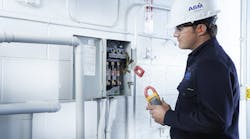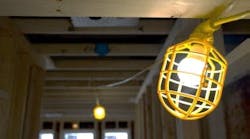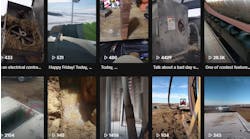The trend of updates to NFPA 70E since 2012 is clear. Safety experts haven’t just emphasized the importance of proper maintenance in electrical safety; they’ve increasingly encoded that importance in the standard. With release of the 2018 edition of NFPA 70E, the prioritization of hazard elimination puts proper maintenance front and center.
It’s a cultural shift we all need to get behind. Proper maintenance of electrical equipment has been too easy to deprioritize because, ironically, we’re used to it working so well. When equipment is energized and working, and it’s been that way for years, it’s easy to think proactive maintenance sounds like a value-add rather than necessary due diligence. When nothing goes wrong, it’s easy for preventive maintenance to seem like a strategic “nice-to-have” instead of the “must-have” that keeps things from going wrong.
Connecting hazard elimination and maintenance
It’s true the updated hierarchy of risk controls in NFPA 70E-2018 runs from elimination to personal protective equipment (PPE) without explicitly calling out maintenance, but that’s because maintenance alone doesn’t guarantee an electrically safe working condition. A “qualified person” must fully assess risk and act accordingly to create an electrically safe work condition.
What’s pushing maintenance conditions further into the spotlight is how it fundamentally underlies that hierarchy. How can a qualified person eliminate an arc flash risk without properly assessing the condition of the equipment? Is it possible to properly assess equipment if its maintenance is an unknown?
When outlining the incident energy analysis required at least every five years, NFPA 70E says: “The incident energy analysis shall take into consideration the characteristics of the overcurrent protective device and its fault clearing time, including its condition of maintenance.” This makes it clear that maintenance conditions are now a required part of risk assessments. The formal definition of “normal operation of equipment” also includes the need for equipment to be properly installed and maintained. Simply put, properly assessing risks “by-the-books” now requires knowledge of the maintenance condition of equipment in question.
Whether that risk assessment can be done effectively and efficiently depends on maintenance having been done and documented. Otherwise, the task at hand risks delay and cost while that information is sought out. If the maintenance condition of the subject equipment is an unknown, that could be a load of extra work. At this point, a qualified person has to step back and assess the risks of opening up the system to verify those conditions.
Stop saying: “If it’s not broke, don’t fix it.”
There’s a big hurdle facing proactive approaches to electrical maintenance, and that’s the illusion that electrical systems can perform well without it. A facility may not experience any electrical faults, but that doesn’t mean it’s safe — and we don’t want faults to happen just to prove overcurrent protection is functioning as designed.
Imagine a car enthusiast who loves to rev the engine, blare the radio, and then leave that prize ride in a locked garage. The car may be safe from dents and scratches, but a few minutes of fine-tuned engine idling doesn’t mean the car is safe to drive. Those brakes not only never get tested, but they also never have a chance to function. They just sit there. It would be silly to risk highway speeds on those untested brakes. But every day, facilities continue to rely on ground fault protection or overcurrent protection simply because there hasn’t been a problem.
While the current flows through a working distribution system, critical parts like switchgear and circuit breakers aren’t in motion. If that circuit breaker has been sitting there so long that it won’t open, what happens when operators need to isolate a portion of the system? At this point, work can’t be done because a qualified person can’t properly eliminate a risk. They can’t isolate a portion of the system via an approved lockout-tagout procedure. Without knowing the maintenance condition of the equipment, a qualified person can’t properly assess the risk of an arc flash.
Referencing the maintenance conditions in NFPA 70E-2018 pushes us to be proactive about that testing. Waiting for our systems to actively show signs of needing maintenance may mean unsafe conditions have already existed for some time ― we’re just lucky nothing’s happened while we ignored the possibility.
The done and the documented
A great deal of due diligence is done by well-meaning, safety-minded individuals who just don’t have a completely developed documentation program on hand for their facility. Without accurate and complete documentation of equipment maintenance, a qualified person must assume it didn’t happen at all. This leaves them without any recourse but to stop their work and go back to square one, so to speak — verifying the condition of the equipment.
Let’s say a third-party testing firm reviewed an electrical system and delivered a report last year. At that time, some maintenance was also completed in conjunction with some new tie-in work. However, those maintenance activities weren’t properly documented. Without the documentation, it’s like it was never performed. Now that maintenance conditions are cemented in the NFPA risk assessment process, we should take the opportunity to cement our documentation of those conditions.
Comprehensive documentation is also an important step in developing a complete program for planning and scheduling maintenance. Otherwise, every time we want to be sure everything is “up-to-date,” we’re stuck combing through paperwork again, comparing spreadsheets and documents to our maintenance manuals, hoping we don’t hear ourselves say: “I thought we did…” or “I think we’re supposed to have…”.
From piecemeal to clean sweep
NFPA standards that call for maintenance conditions reference manufacturer recommendations and consensus standards. At first glance that may feel incomplete, leaving us responsible to collect every recommendation and standard relevant to the equipment at hand. One overarching maintenance standard for everything seems like an easier box to check — one big rule everyone can satisfy and say, “There, it’s safe.” But by making sure to include those recommendations and consensus standards, NFPA 70E is empowering us to push back against simple ideas of safety. The latest edition of the standard helps us champion the need for comprehensive, planned maintenance that makes sure we’re not operating piecemeal.
We all know what it’s like to work under real conditions — the pressure to cut costs for this month and come back to it or the need to prioritize work you need now over work you can put off for later. A comprehensive maintenance program gives you a framework for managing an asset actively. It also gives you better control of your schedule and your costs. So when the pressure to cut costs comes up again, you can demonstrate the value of a preventive maintenance program. When an operational need demands priority, you’ve also got a plan that empowers your decision-making.
Champions for change
Compliance isn’t a fun word. The business need for well-documented due diligence that can mitigate liability in the event of an incident is just that ― a business need. For a true safety culture to take hold, what’s important are the details that make a difference between an electrically safe working condition and the dire consequences of an unsafe one. Continuous updates to NFPA 70E over the last decade provide an opportunity to use those compliance and business needs to strengthen our safety culture.
If your facility needs to develop a comprehensive electrical maintenance program, the trend of recognizing maintenance conditions in risk assessment is in your favor. If you need help taking stock of your electrical maintenance strategy, an objective, third-party testing company is best situated to assess equipment and deliver on your compliance and safety needs.
Ceci is a vice president of operations for the Electrical Power Solutions Group at ABM Industries. He can be reached at [email protected].





